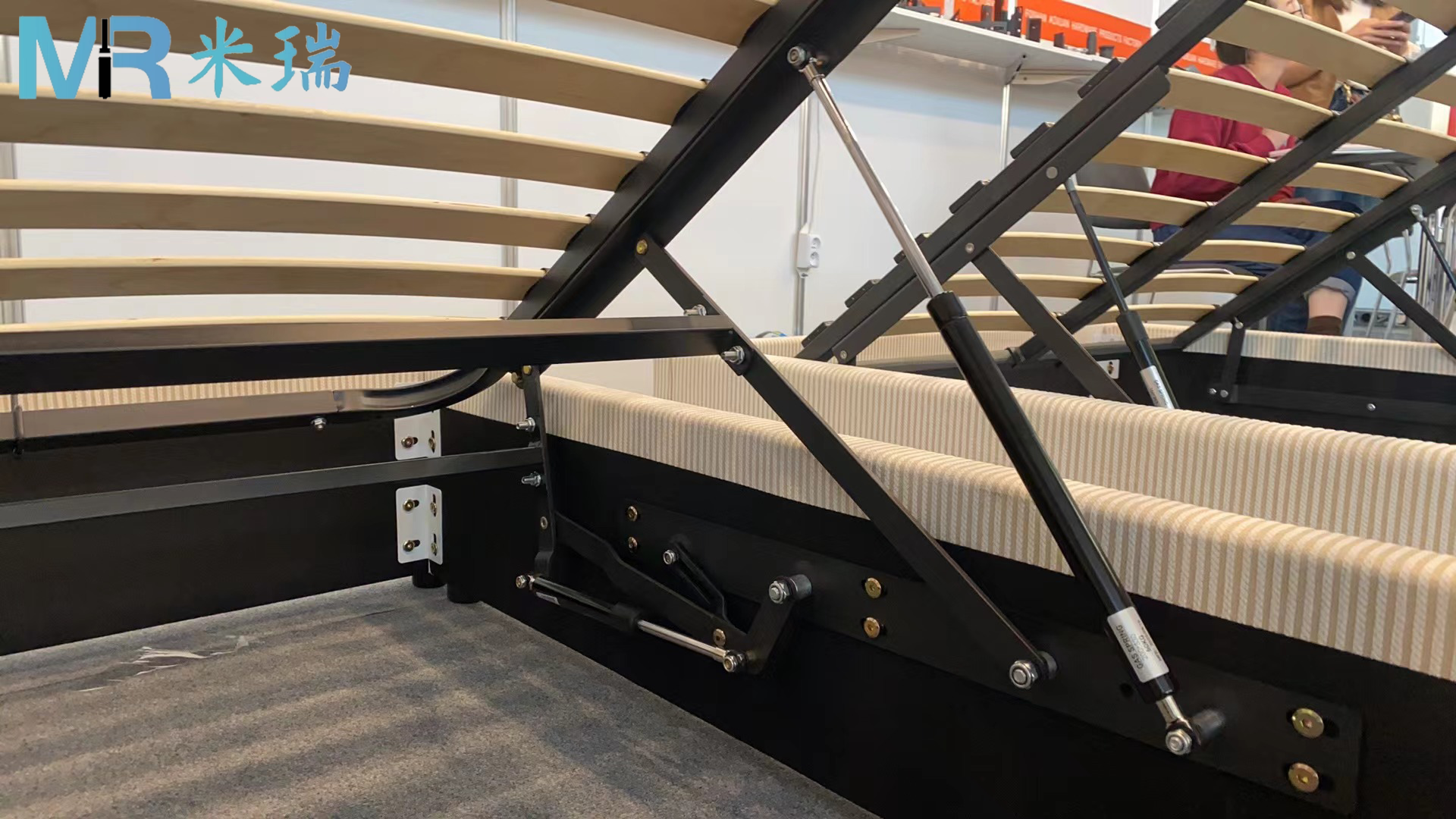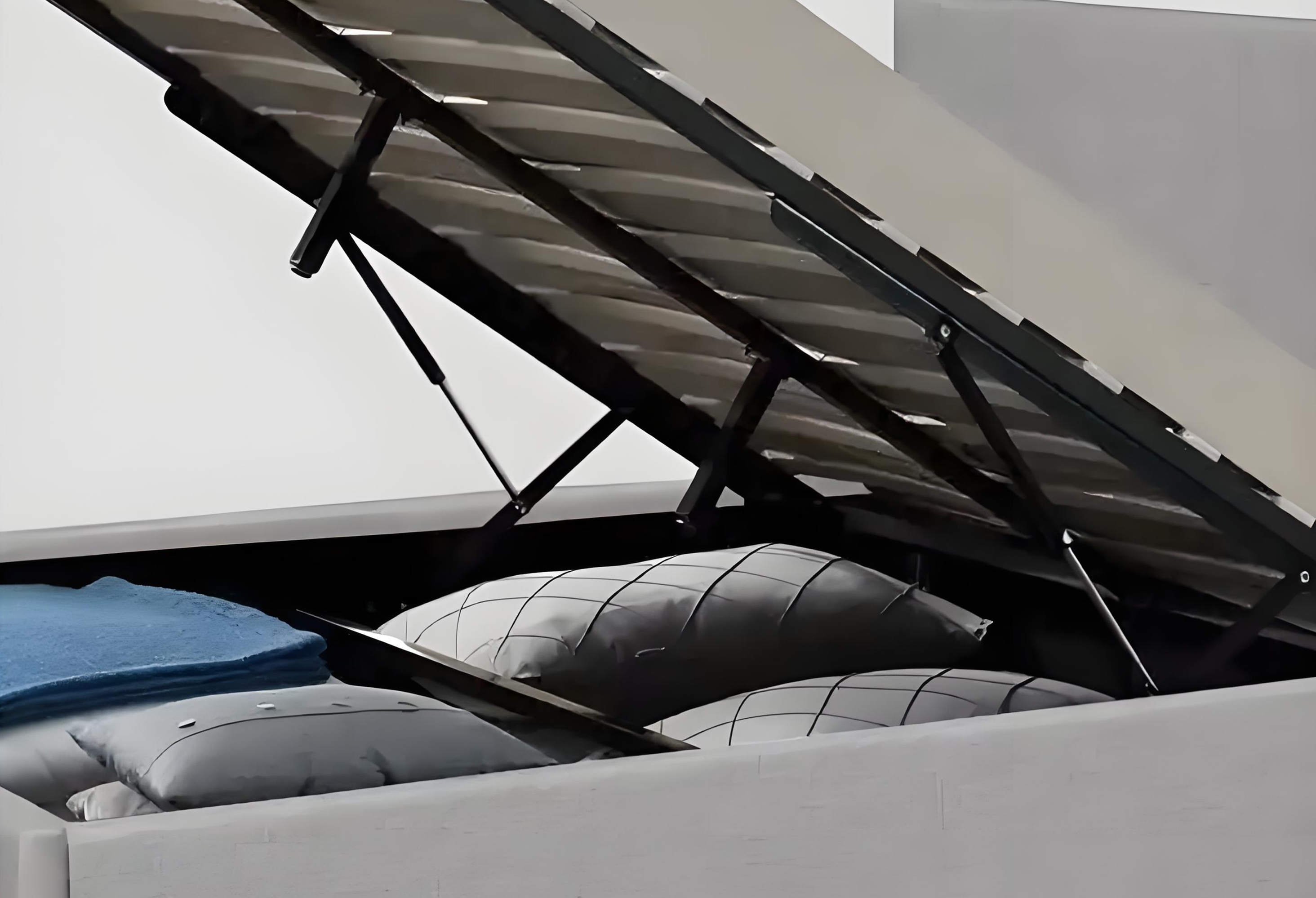close
Choose Your Site
Global
Social Media
Author: Site Editor Publish Time: 2025-09-15 Origin: Site
Springs are essential components used in various mechanical and technical systems to store and release energy. Whether you're designing an automotive suspension, manufacturing equipment, or working in aerospace, understanding the different types of springs and their applications is crucial. Two of the most common spring types are gas springs and mechanical springs. In this article, we will explore the differences between these two spring types, their respective advantages and disadvantages, and how to choose the right one for your specific needs.
Mechanical springs are conventional coiled-metal springs that store energy by deforming under external forces. The two most common types of mechanical springs are helical springs, leaf springs, and torsion springs. They work based on the principle of elastic deformation, meaning that the spring compresses or stretches when a force is applied and returns to its original shape when the force is removed.
Helical Springs: Made from wire wound into a coil shape, helical springs are widely used in applications such as suspension systems, valves, and mattress foundations.
Leaf Springs: These springs consist of several layers of metal plates stacked together. They are used in heavy-duty applications like automotive suspension systems, particularly in trucks and trailers.
Torsion Springs: Torsion springs store energy by twisting. They are commonly found in applications such as door hinges, clothespins, and other rotating mechanisms.

Mechanical springs function by deforming when an external force is applied, and they store energy during the deformation process. When the force is removed, the spring returns to its original shape, releasing the stored energy. This characteristic allows mechanical springs to perform numerous functions in various systems, from suspension systems to industrial machinery.
Cost-Effective: Mechanical springs are typically cheaper than gas springs, making them an affordable option for many applications.
Simple Design: The design of mechanical springs is straightforward, which simplifies their manufacturing and installation.
Wide Availability: Mechanical springs are widely available in various sizes, types, and load capacities.
Reliable Over Time: These springs provide consistent force over a broad range of temperatures, and their mechanical properties don't change much over time.
Limited Control Over Motion: Mechanical springs offer limited control over motion characteristics such as speed or damping.
Noise and Vibration: Mechanical springs can generate noise and vibration, especially when used in high-frequency applications.
Wear and Fatigue: Over time, mechanical springs are prone to wear and fatigue, which may result in decreased performance.
Gas springs, also known as gas struts, are designed to store energy using pressurized gas, usually nitrogen. The gas is contained within a cylindrical container, and when force is applied, the gas exerts pressure against a piston to generate energy. Unlike mechanical springs, which rely on physical deformation, gas springs store energy in a gas-filled chamber. This design provides smoother and more controlled motion.
Compression Gas Springs: These springs compress the gas inside the cylinder to create force, making them ideal for lifting and lowering applications.
Tension Gas Springs: Tension gas springs extend the gas-filled cylinder, generating force to pull or compress an object, commonly used in applications that require constant force in one direction.
Gas springs are designed with a variety of features to accommodate different applications. Some gas springs, such as springlift gas springs, can be customized to fit specific needs, such as adjusting the output force, adding locking mechanisms, or selecting different fittings. This level of customization is often unavailable in mechanical springs.
Gas springs offer adjustable force and damping, allowing for fine-tuned control over motion. This feature makes them ideal for applications that require smooth, controlled movement, such as automotive hoods, office chairs, and hospital beds.
Some gas springs come with locking mechanisms, enabling the spring to stay in a fully extended position until unlocked. This feature is particularly useful in industries where safety and control are paramount.
Smooth and Controlled Motion: Gas springs offer precise control over motion, speed, and damping, making them ideal for sensitive applications.
Adjustable Force: The force exerted by gas springs can be adjusted to meet specific requirements, such as in springlift gas springs for more customizable lifting capabilities.
Minimal Noise and Vibration: Gas springs operate quietly and generate less vibration, providing a more comfortable and efficient system in places like medical equipment or automotive hoods.
Versatility: Gas springs can be used in a wide range of applications and are highly customizable, making them suitable for many industries, including automotive, aerospace, and manufacturing.
Higher Initial Cost: Gas springs tend to be more expensive upfront compared to mechanical springs, which might deter some businesses or industries from choosing them.
Temperature Sensitivity: Gas springs can be sensitive to temperature changes, which may affect their performance if not designed with temperature variations in mind.
Requires Precise Design and Calculation: Gas springs need to be carefully designed and calculated to ensure optimal performance, as improper configuration can result in failure.
The primary difference between gas springs and mechanical springs lies in their design and function. Gas springs rely on pressurized gas to store and release energy, whereas mechanical springs use physical deformation of metal to store energy. Gas springs offer more precise control over motion, speed, and damping, making them suitable for applications that require smooth, controlled motion. In contrast, mechanical springs are simpler and more cost-effective but offer limited control over the movement.
One of the standout advantages of gas springs over mechanical springs is the ability to customize them to fit specific requirements. Gas springs, such as gas springs struts, can be tailored to have varying output forces, end fittings, and locking mechanisms, offering a high level of flexibility. Mechanical springs, on the other hand, generally offer limited customization options, making them suitable for more straightforward applications.

Gas springs are generally more expensive initially than mechanical springs, but they offer several advantages in terms of performance, control, and versatility. In the long term, gas springs may prove to be more cost-effective due to their lower maintenance requirements and superior performance in certain applications. Mechanical springs, while more affordable initially, may incur higher maintenance costs over time due to wear and fatigue.
Gas springs are designed to operate quietly, generating minimal noise and vibration. This is particularly beneficial in applications where noise reduction is crucial, such as in office chairs or medical beds. Mechanical springs, on the other hand, tend to generate more noise and vibration, particularly in high-frequency applications.
Mechanical springs tend to be more durable in a wide range of operating conditions, including extreme temperatures. However, they are susceptible to wear and fatigue over time, which may require periodic maintenance or replacement. Gas springs, while offering precise motion control, may be more susceptible to temperature changes and may require more maintenance to ensure optimal performance.

Gas springs are ideal for applications that require precise motion control and adjustable force. Some common applications include:
Automotive Hoods: Gas springs provide smooth and controlled lifting and lowering, making them a popular choice for car hoods and trunks.
Office Chairs: Gas springs are commonly used in adjustable office chairs to provide smooth and precise height adjustments.
Hospital Beds: Gas springs are used in hospital beds to adjust the head and foot positions of the bed with ease and precision.
Mechanical springs are well-suited for simpler applications where precise motion control is not critical. They are commonly used in:
Suspension Systems: Mechanical springs are widely used in suspension systems, such as those found in trucks and trailers, where they provide load support and absorption of shocks.
Heavy-Load Lifting: Mechanical springs can handle high loads and are often used in industrial machinery and large equipment.
Cost-Effective Applications: Mechanical springs are ideal for applications where budget is a primary concern, such as in everyday machinery and devices.
When choosing between gas springs and mechanical springs, it is essential to consider the following factors:
Load Capacity: Gas springs are suitable for lighter, more precise applications, while mechanical springs can handle heavier loads.
Size: Gas springs are more compact and suitable for applications with limited space, while mechanical springs are often bulkier.
Operating Environment: Consider the temperature and environmental conditions where the spring will operate. Mechanical springs tend to be more durable in extreme conditions, while gas springs may require additional design considerations for temperature sensitivity.
Precision Control: If your application requires smooth, controlled motion, gas springs are the better choice. For simple applications, mechanical springs may suffice.
Gas Springs: While gas springs are more expensive upfront, they offer long-term benefits such as precision, reduced maintenance costs, and better control.
Mechanical Springs: Mechanical springs are cost-effective for applications that do not require precise motion control but may require more frequent maintenance and replacements.
A gas spring uses pressurized gas to store and release energy, providing smooth and controlled motion, while a mechanical spring uses physical deformation of metal to store energy.
Gas springs are better for applications requiring precise and controlled motion, such as adjustable office chairs and automotive hoods.
Yes, gas springs tend to be more expensive upfront, but they offer better performance and fewer maintenance requirements in the long run.
Yes, mechanical springs generally have a higher load capacity than gas springs.
Gas springs can be sensitive to temperature changes, which may affect their performance if not designed for specific conditions.
When choosing between gas springs and mechanical springs, it's crucial to consider the specific needs of your application. Gas springs offer superior control, smooth motion, and customization, making them ideal for precise applications. However, mechanical springs provide a cost-effective solution for simpler applications where motion control is not as critical. By evaluating the load capacity, size, operating environment, and precision requirements, you can choose the spring that best suits your needs and ensures long-lasting performance.